Alice's Restaurant is a 1969 American comedy film directed by Arthur Penn. It is an adaptation of the 1967 folk song "Alice's Restaurant Massacree", originally written and sung by Arlo Guthrie. The film stars Guthrie as himself, with Pat Quinn as Alice Brock and James Broderick as Ray Brock. Penn, who resided in the story's setting of Stockbridge, Massachusetts, co-wrote the story with Venable Herndon in 1967 after hearing the song, shortly after completing Bonnie & Clyde.
| Alice's Restaurant | |
|---|---|
Theatrical release poster | |
| Directed by | Arthur Penn |
| Produced by | Hillard Elkins Joseph Manduke |
| Screenplay by | Venable Herndon Arthur Penn |
| Starring | Arlo Guthrie Pat Quinn William Obanhein James Broderick Pete Seeger Lee Hays |
| Music by | Arlo Guthrie Garry Sherman |
| Cinematography | Michael Nebbia |
| Edited by | Dede Allen |
| Distributed by | United Artists |
Release date |
|
Running time | 111 minutes |
| Country | United States |
| Language | English |
| Box office | $6,100,000 (North American theatrical rentals) |
Alice's Restaurant was released on August 19, 1969, a few days after Guthrie appeared at the Woodstock Festival. A soundtrack album for the film was also released by United Artists Records. The soundtrack includes a studio version of the title song, which was originally divided into two parts (one for each album side); a 1998 CD reissue on the Rykodisc label presents this version of the song in full, and adds several bonus tracks to the original LP.
Screenplay
In 1965, Arlo Guthrie (as himself) has attempted to avoid the draft by attending college in Montana. His long hair and unorthodox approach to study gets him in trouble with local police as well as residents. He quits school, and subsequently hitchhikes back East. He first visits his father Woody Guthrie (Joseph Boley) in the hospital.
Arlo ultimately returns to his friends Ray (James Broderick) and Alice Brock (Pat Quinn) at their home, a deconsecrated church in Great Barrington, Massachusetts where they welcome friends and like-minded bohemian types to "crash". Among these are Arlo's school friend Roger (Geoff Outlaw) and artist Shelley (Michael McClanathan), an ex-heroin addict who is in a motorcycle racing club. Alice is starting up a restaurant in nearby Stockbridge. Frustrated with Ray's lackadaisical attitude, she has an affair with Shelley, and ultimately leaves for New York to visit Arlo and Roger. Ray comes to take her home, saying he has invited a "few" friends for Thanksgiving.
The central point of the film is the story told in the song: After Thanksgiving dinner, Arlo and his friends decide to do Alice and Ray a favor by taking several months worth of garbage from their house to the town dump. After loading up a red VW microbus with the garbage, and "shovels, and rakes and other implements of destruction", they head for the dump. Finding the dump closed for the holiday, they drive around and discover a pile of garbage that someone else had placed at the bottom of a short cliff. At that point, as mentioned in the song, "...we decided that one big pile is better than two little piles, and rather than bring that one up we decided to throw ours down."
The next morning they receive a phone call from "Officer Obie" (Police Chief William Obanhein as himself), who asks them about the garbage. After admitting to littering, they agree to pick up the garbage and to meet him at the police officers' station. Loading up the red VW microbus, they head to the police station where they are immediately arrested.
As the song puts it, they are then driven to the quote scene of the crime unquote where the police are engaged in a hugely elaborate investigation. At the trial, Officer Obie is anxiously awaiting the chance to show the judge the 27 8x10 color glossy photos of the crime but the judge (James Hannon as himself) happens to be blind, using a seeing eye dog, and simply levies a $25 fine, orders them to pick up the garbage and then sets them free. The garbage is eventually taken to New York and placed on a barge. Meanwhile, Arlo has fallen in love with a beautiful Asian girl, Mari-chan (Tina Chen).
Later in the movie, Arlo is called up for the draft, in a surreal depiction of the bureaucracy at the New York City military induction center on Whitehall Street. He attempts twice to make himself unfit for induction, first by getting drunk the night before and performing the physical exams while hung over, then by acting like a homicidal maniac in front of the psychiatrist, but fails both times (the latter incident actually gets him praise). Because of Guthrie's criminal record for littering, he is first sent to the Group W bench (where convicts wait), then outright rejected as unfit for military service, not because of the littering incident, but because the government is suspicious of "his kind" and instead opted to submit his personal records to Washington, DC.
Upon returning to the church, Arlo finds Ray and members of the motorcycle club showing home movies of a recent race. Shelley enters, obviously high, and Ray beats him until he reveals his stash of heroin, concealed in some art he has been working on. Shelley roars off into the night on his motorcycle to his death; the next day, Woody dies. Ray and Alice have a hippie-style wedding in the church, and a drunken Ray proposes to sell the church and start a country commune instead, revealing that he blames himself for Shelley's death. The film ends with Alice standing alone in her bedraggled wedding gown on the church steps.
- Arlo Guthrie as himself
- Pat Quinn as Alice Brock
- James Broderick as Ray Brock
- Pete Seeger as himself
- Lee Hays as himself – reverend at evangelical meeting
- Michael McClanathan as Shelly
- Geoff Outlaw as Roger Crowther
- Tina Chen as Mari-chan
- Kathleen Dabney as Karin
- William Obanhein as himself – Officer Obie
- James Hannon as himself – the blind judge
- Seth Allen as Evangelist
- Monroe Arnold as Bluegrass
- Joseph Boley as Woody Guthrie
- Vinnette Carroll as Draft Clerk
- Sylvia Davis as Marjorie Guthrie
- Simm Landres as Private Jacob / Jake
- Eulalie Noble as Ruth
- Louis Beachner as Dean
- MacIntyre Dixon as First Deconsecration Minister
- Arthur Pierce Middleton as Second Deconsecration Minister
- Donald Marye as Funeral Director
- Shelley Plimpton as Reenie
- M. Emmet Walsh as Group W Sergeant
The real Alice Brock makes a number of cameo appearances in the film. In the scene where Ray and friends are installing insulation, she is wearing a brown turtleneck top and has her hair pulled into a ponytail. In the Thanksgiving dinner scene, she is wearing a bright pink blouse. In the wedding scene, she is wearing a Western-style dress.
Stockbridge police chief William Obanhein ("Officer Obie") plays himself in the film, explaining to Newsweek magazine that making himself look like a fool was preferable to having somebody else make him look like a fool. Judge James E. Hannon, who presided over the littering trial, also appears as himself in the film. Many of Guthrie's real-life associates in Stockbridge made appearances as extras, and Penn, who himself had a home in Stockbridge, spent time living among them in an effort to grasp their lifestyle. Guthrie and all of the extras were housed at the same hotel during filming of scenes outside Stockbridge, but Guthrie received star treatment; a limousine was provided for Guthrie each morning while the others had to find their own transportation for filming. This strained the relations between Guthrie and his friends for many years. Much of the film was recorded in Stockbridge.
The film also features the first credited film appearance of character actor M. Emmet Walsh, playing the Group W sergeant. (Walsh had previously appeared as an uncredited extra in Midnight Cowboy, released three months prior.) The film also features cameo appearances by American folksingers/songwriters Lee Hays (playing a reverend at an evangelical meeting) and Pete Seeger (playing himself).
The original song "Alice's Restaurant Massacree" that formed the basis for the film's central plotline was, for the most part, a true story. However, other than this and the hippie wedding at the end of the film, most of the other events and characters in the film were fictional creations of the screenplay's writers. According to Guthrie, commenting in the DVD's audio commentary section, the film used the names of real people but took numerous liberties with actual events. Richard Robbins, Guthrie's co-defendant in real-life, was replaced by the fictional Roger Crowther for the film (in the song, he remained anonymous). The subplots involving the Shelly character were completely fictional and not based on any real people or incidents in Guthrie's life; his character's motorcycle club was loosely based on the Trinity Motorcycle Club (or, by a conflicting account, the Triangle Motorcycle Club), a real-life group of cyclists that associated with the Brocks and were alluded to in another Guthrie song, the "Motorcycle Song." The film also has Guthrie being forced to leave a Montana town after "creating a disturbance" – i.e., several town residents object to Guthrie's long hair, and gang up to throw him through a plate glass window. This never happened, and Guthrie expresses regret that Montana got a "bad rap" in the film. In reality, during the time of the littering incident and trial, Guthrie was still enrolled in a Montana college, and was only in Stockbridge for the long Thanksgiving weekend (he would drop out of college at the end of the semester).
Alice Brock has spoken very negatively of the film's portrayal of her. She stated in a 2014 interview "That wasn’t me. That was someone else’s idea of me." She took particular offense at the film falsely implying that she had slept with Guthrie (among others) and noted that she had never associated with heroin users. She also noted that the song and film brought a large amount of unwanted publicity: "It just really impinged on your privacy. It’s just amazing how brazen people can be when you’re a supposed public figure(…) We sold the church at that point." Richard Robbins, who did not consent to his likeness being used in the film, described almost all the additions to the story as "all fiction" and "complete bull."
The film has a 63% rating on Rotten Tomatoes based on 16 reviews. In 2009, Politics Daily wrote that, "calling the 1969 film a comedy misses its noir backbeat of betrayed romanticism, and thinking of it as a madcap autobiography misses its politics. This is a movie driven by the military draft and the Vietnam War".
Upon its initial release, Newsweek called the film "the best of a number of remarkable new films which seem to question many of the traditional assumptions of establishment America."
When interviewed in 1971, the film's director, Arthur Penn, said of the film: "What I tried to deal with is the US's silence and how we can best respond to that silence. ... I wanted to show that the US is a country paralyzed by fear, that people were afraid of losing all they hold dear to them. It's the new generation that's trying to save everything".
In being offered the opinion that violence is not so important in the film, Penn replied: "Alice's Restaurant is a film of potential transition because the characters know, in some way, what they are looking for. ... It's important to remember that the characters in Alice's Restaurant are middle-class whites. They aren't poor or hungry or working class. They are not in the same boat as African Americans. But they're not militants either. In this respect the church dwellers are not particularly threatening. They find it easy to live there, even if most people can't afford such a luxury. From this point of view, this film depicts a very specific social class. It's a bourgeois film".
The final scene is not of a loving couple seeing off their guests, but of Alice standing alone looking into the distance, watching the guests leave, as if knowing that her future is in fact bleak with Ray. Coincidentally, the real Alice and Ray finalized their divorce on the same day the wedding scene was filmed. Arthur Penn has said that the final scene was intended as comment on the inevitable passing of the counterculture dream: "In fact, that last image of Alice on the church steps is intended to freeze time, to say that this paradise doesn’t exist any more, it can only endure in memory". Gene Siskel of the Chicago Tribune listed Alice's Restaurant as third best film of 1969.
The film grossed $6,300,000 in the United States, making it the 23rd highest-grossing film of 1969.
- Nominated for Academy Award for Best Director (1969) – Arthur Penn
- Nominated for Writers Guild of America Award for Best Drama Written Directly for the Screen (1970) – Venable Herndon, Arthur Penn
- Third Place – Laurel Awards – Gold
Watch movie Alice%27s Restaurant Film online on Amazon
Watch movie Alice%27s Restaurant Film online
Watch The Movie On PrimeChillar Party Full HD Movie Download
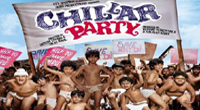
Zabak Full HD Movie Download
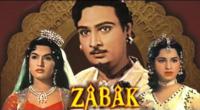
Maa Aur Mamta Full HD Movie Download
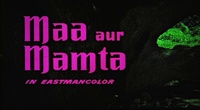
Apsara Full HD Movie Download
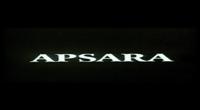
Paap Ki Duniya Full HD Movie Download
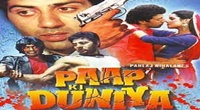
Rani Roopmati Full HD Movie Download
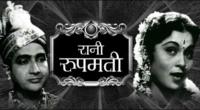
Banarsi Babu Full HD Movie Download

Jai Vikranta Full HD Movie Download

Shaadi Se Pehle (2006) Full HD Movie Download
.jpg)
Chor Machaye Shor (1974) Full HD Movie Download
.jpg)
Raaj-The Showman Full HD Movie Download

Ra Ra Krishnayya Full HD Movie Download
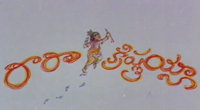
Rajakali Amman Full HD Movie Download

Lal Salam Full HD Movie Download

Anjali Full HD Movie Download
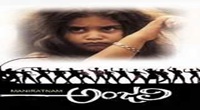
Malli Inkokkasari Full HD Movie Download

Parmeswari Mahimalu Full HD Movie Download

Rambha Neeku Urvasi Naaku Full HD Movie Download

Kalangarai Vilakkam Full HD Movie Download

An Evening in Paris Full HD Movie Download

Ta Ra Rum Pum Full HD Movie Download
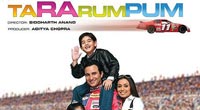
Download latest Movie from bollywood
- 1> baaghi 3
- 2> THE SKY IS PINK MOVIE FULL STORY AND REVIEW
- 3> Luka Chuppi
- 4> TO ALL THE BOYS I’VE LOVED BEFORE
- 5> Kabir Singh
- 6> Street Dancer 3D
- 7> Simmba
- 8> Gone Girl
- 9> The Girl Who Lived
- 10> Ludo
- 11> DILWALE DULHANIA LE JAYENGE
- 12> GUILTY
- 13> The Godfather
- 14> Adventures of Rusty
- 15> Sooryavanshi
- 16> Satyameva Jayate 2
- 17> Thappad
- 18> Bhool Bhulaiyaa 2
- 19> KGFChapter 2
- 20> Mardaani 2
- 21> Pinjar
- 22> Shivaji maharaj
- 23> Ek Villian 2
- 24> Hungama 2
- 25> Divergent
- 26> Mumbai Saga
- 27> The Internship
- 28> HIT (telugu)
- 29> Panga
- 30> The perfect date
- 31> 16 December
- 32> Gopala Gopala (Telugu)
- 33> Brahmastra
- 34> Gangubai Kathiawadi
- 35> Manmadhudu
- 36> Nenu local
- 37> Mahanati
- 38> Shatamanam bavathi
- 39> Lagaan
- 40> After
- 41> MOM
- 42> Shamshera
- 43> Raguvaran BTech
- 44> Khakee
- 45> The villain
- 46> OM
- 47> Mr. perfect
- 48> Bueatifull mind
- 49> Hichki
- 50> Gabbar Singh
- 51> Jogi
- 52> Before Sunrise
- 53> Before Sunset
- 54> Before Midnight
- 55> The Big Bull
- 56> Top Gun: Maverick
- 57> The Purge
- 58> The Sky is Pink
- 59> Laxmmi Bomb
- 60> Sadak 2
- 61> Sufna
- 62> Prithviraj
- 63> PK
- 64> Coolie No 1(2020)
- 65> Black Widow
- 66> Dear Zindagi
- 67> Dil Bechara
- 68> PHIR HERA PHERI
- 69> WAR
- 70> Dostana
- 71> RRR: Roudram Ranam Rudhiram
- 72> Maidan
- 73> Dabbang 3
- 74> Chhalaang
- 75> life as we know it
- 76> SherShaah
- 77> Sandeep Aur Pinky Faraar
- 78> Event Horizon
- 79> 83
- 80> Radhe: Your Most Wanted Bhai
- 81> Gunjan Saxena: The Kargil Girl
- 82> Mr India
- 83> Vivah
- 84> Anokha Bandhan
- 85> Ghost
- 86> Bhoot: Part One - The Haunted Ship
- 87> Haseen Dilruba
- 88> Laal Singh Chaddha
- 89> Qismat
- 90> Rajput
- 91> Drive
- 92> Dil Chahta Hai
- 93> Dil Ki Baazi
- 94> Dil Ka Rishta
- 95> Teesri Manzil
- 96> Dil
- 97> Love Aaj Kal
- 98> Khaali Peeli
- 99> Bunty Aur Babli 2
- 100> Atrangi Re
- 101> Gulabo Sitabo
- 102> Jodi
- 103> Suraj Pe Mangal Bhari
- 104> Deewana
- 105> Attack
- 106> Sardar Udham Singh
- 107> Toofan
- 108> THE LOVEBIRDS
- 109> Jersey
- 110> Ginny Weds Sunny
- 111> Thalaivi
- 112> Shiddat
- 113> Angels vs Zombies
- 114> Koi Mil Gya
- 115> Thank God
- 116> Bhuj: The Pride of India
- 117> Hum Aapke Hain Kaun
- 118> The Platform
- 119> Bird Box
- 120> Roohi Afzana
- 121> Torbaaz
- 122> Nikamma
- 123> World War Z
- 124> Extraction
- 125> Train to Busan
- 126> Life of Pi
- 127> SHAADI MEIN JROOR AANA
- 128> Himmat Aur Mehnat
- 129> To All The Boys: P.S. I Still Love You
- 130> Mimi
- 131> Good Newwz
- 132> Shubh Mangal Zyada Saavdhan
- 133> Raabta
- 134> Harry Potter and the Philosopher's Stone
- 135> Harry Potter and the Chamber of Secrets
- 136> Chhapaak
- 137> War of the Worlds
- 138> Harry Potter and the Prisoner of Azkaban
- 139> Harry Potter and the Goblet of Fire
- 140> MURDER MYSTERY
- 141> Shakuntala Devi
- 142> Bachchan Pandey
- 143> Jayeshbhai Jordar
- 144> Sheer Qorma
- 145> Saina
- 146> 'O' Pushpa I hate tears
- 147> Kedarnath
- 148> MS Dhoni The Untold Story
- 149> Chhichhore
- 150> Badhaai Ho
- 151> Unstoppable
- 152> Oz the Great And Powerful
- 153> The Girl on the Train
- 154> Haathi Mere Saathi 2020
- 155> The Conjuring: The Devil Made Me Do It
- 156> Gandhi Se Pehle Gandhi
- 157> The Song of Scorpions
- 158> Srimanthudu
- 159> Hello Guru Prema Kosame
- 160> Beauty and The Beast
- 161> Black Panther
- 162> Charlie and the Chocolate Factory
- 163> Bole Chudiyan
- 164> Fidaa
- 165> Duvvada Jagannadham
- 166> Bruce Lee: The Fighter
- 167> Hyper
- 168> Yaara
- 169> Red (2020)
- 170> Shivam
- 171> That Is Mahalakshmi
- 172> Nishabdham
- 173> Aashram 2020 web series
- 174> Laxmii
- 175> Mismatched
- 176> STUDENT OF THE YEAR 2
- 177> NAIL POLISH
- 178> Ramprasad Ki Tehrvi
- 179> KAAGAZ
- 180> 12 o Clock
- 181> The Power
- 182> bolo hau
- 183> Tribhanga
- 184> JAMUN
- 185> Madam Chief Minister
- 186> Maasaab
- 187> Aadhaar
- 188> Tanhaji
- 189> Bhaagi 3
- 190> Bhootnath
- 191> MALANG
- 192> Jai Mummy Di
- 193> Haathi Mere Saathi 2021
- 194> Shakeela
- 195> Unpaused
- 196> Annayya
- 197> Vamsoddharakudu
- 198> Mrugaraju
- 199> Narasimha Naidu
- 200> Sankranti
- 201> Manasu Maata Vinadhu
- 202> Anjaane
- 203> Apaharan
- 204> Bachke Rehna Re Baba
- 205> Bewafaa
- 206> Roohi
- 207> Radhe
- 208> Zindagi Khoobsoorat Hai
- 209> Yeh Mohabbat Hai
- 210> Yeh Kya Ho Raha Hai?
- 211> The Tomorrow War
- 212> DehradunDiary
- 213> Meri Shaadi Karaoo
- 214> Matruu Ki Bijlee Ka Mandola
- 215> No One Killed Jesica
- 216> Aag Ka Goola
- 217> Eight Million Dollars
- 218> Three Hundred
- 219> Cats and Dog
- 220> Decoy
- 221> Gold Rush
- 222> You Have Got Mail
- 223> Final Destination three
- 224> Tofan
- 225> Jungle
 Story of movie Alice%27s Restaurant Film :
Story of movie Alice%27s Restaurant Film : 